Mastering the Zerg: Advanced StarCraft 2 Tactics to Dominate Your Opponents
Key Takeaways:
- Resource Management is Crucial: Efficient worker production and resource collection form the backbone of a successful Zerg strategy.
- Map Control with Creep Spread: Expanding Creep across the map grants vision, limits opponent expansion, and empowers Zerg speed and flexibility.
- Adaptability through Upgrades and Scouting: Timely upgrades and constant reconnaissance allow Zerg players to evolve alongside, or ahead of, their opponents.
The Zerg race in StarCraft 2 offers a unique and powerful approach to the game, with mechanics distinctly different from the Terran and Protoss. Unlike their counterparts, every aspect of the Zerg Swarm is a living entity, making their structures, units, and strategies feel alien yet deeply interconnected. Playing as Zerg requires mastering their unusual resource management, rapid adaptability, and aggressive expansion tactics. Here’s a guide on mastering Zerg strategy to dominate your opponents.
1. Never Too Many Workers
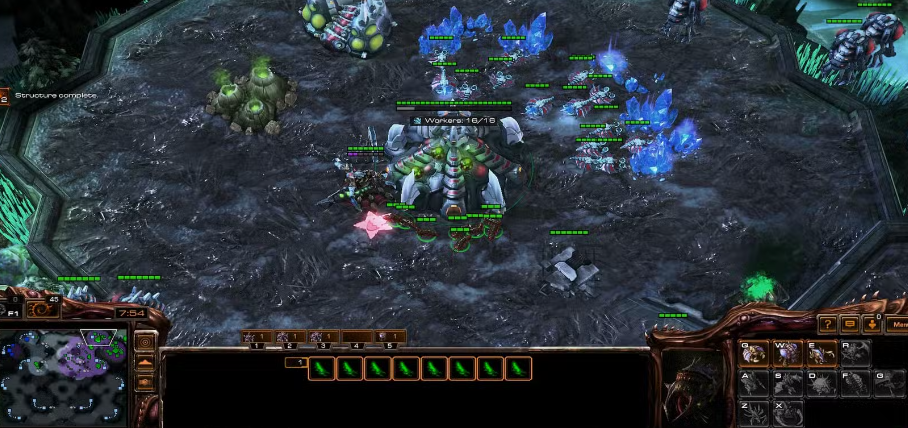
Prioritize Worker Production to Fuel Your Economy
In Zerg gameplay, building a strong economy with a continuous influx of resources is essential. Unlike Terran or Protoss, Zerg buildings are created by morphing Drones—your workers—directly into structures, permanently consuming that Drone. This mechanic requires constant attention to worker production to ensure your economy doesn’t lag behind. Here are some key tips to maintain and maximize your resource pool:
- Keep Hatcheries Saturated: Aim to maintain 16 workers per Hatchery for mineral saturation. Saturation ensures consistent resource income, which allows you to afford both building production and army expansion.
- Replace Drones Regularly: Any Drone that morphs into a building needs replacing quickly. Set a routine of checking worker counts at each Hatchery and training additional Drones as needed.
Focusing on worker production sets up a strong economic foundation, which allows you to execute a flexible, aggressive strategy without resource constraints.
2. Overlord Surveillance

Gain Early Game Intelligence with Overlords
Overlords play a dual role in the Zerg Swarm, increasing your supply limit and providing surveillance of the battlefield. In the early game, scouting with Overlords can help you anticipate enemy strategies and prepare an appropriate response. Here’s how to use Overlords effectively:
- Place Overlords on High Ground: Position Overlords along likely enemy paths and on high ground for vision, minimizing the risk of easy destruction by enemy units.
- Invest in Pneumatized Carapace: This upgrade boosts Overlord movement speed, making them more effective at scouting and increasing their survivability.
An informed Zerg player can pivot their strategies based on enemy movements, avoiding nasty surprises and making the most of early-game opportunities.
3. Double Evolution Chambers and Spires
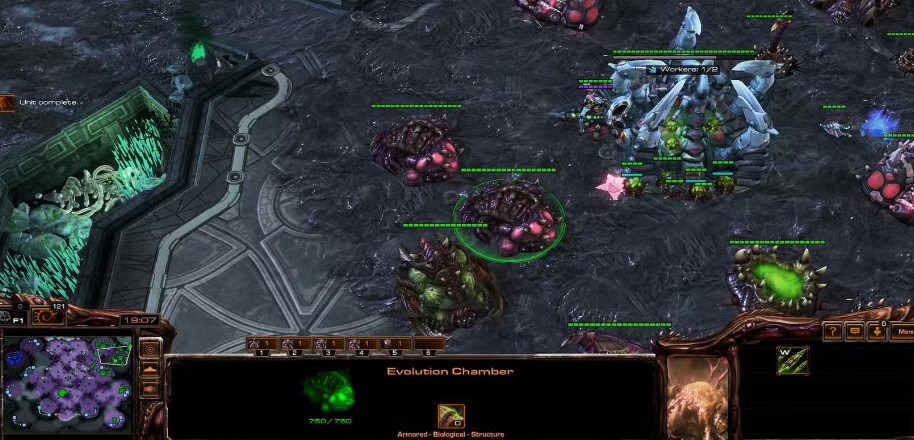
Upgrade Early and Often for Dominant Combat Power
Upgrading your units early can mean the difference between a successful engagement and a costly loss. Evolution Chambers allow ground unit upgrades, while Spires upgrade air units, making dual upgrades a vital investment to stay ahead of your opponent’s tech level.
- Prioritize the Carapace Upgrade: Begin with the carapace (armor) upgrade, which benefits all ground units and helps Zerg’s typically lower-health units survive longer in battle.
- Run Multiple Evolution Chambers and Spires: Building two Evolution Chambers allows simultaneous upgrades to both offense and defense. In games where you aim for balanced unit composition, consider a third Evolution Chamber for even faster upgrades.
Staying ahead in upgrades maximizes your army’s combat potential, giving Zerg units a crucial advantage in mid-to-late-game engagements.
4. Speed is King
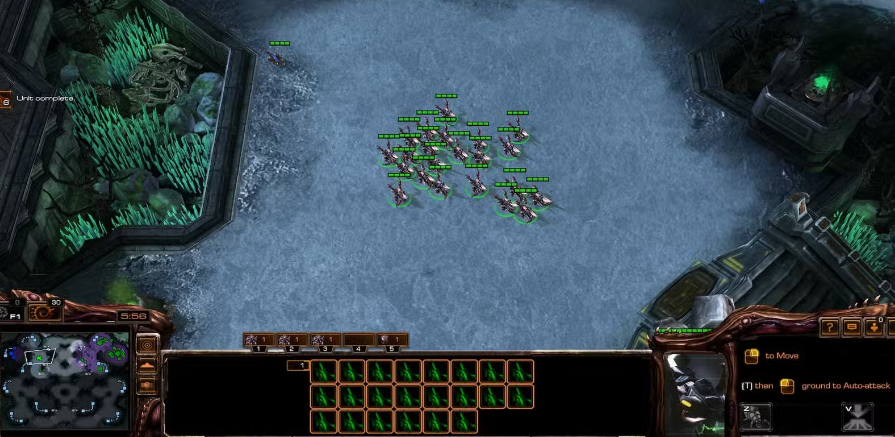
Use Zerg’s Mobility to Outmaneuver Opponents
Zerg units are known for their speed and flexibility on the battlefield, which offers a tactical edge when utilized effectively. The early-game Zergling speed upgrade, Metabolic Boost, transforms Zerglings into some of the fastest units in the game. This advantage can turn a simple raid into a devastating worker kill or base disruption.
- Hit and Run Tactics: Use speed-enhanced Zerglings and other mobile units to attack undefended areas, forcing the enemy to divide their attention and defense.
- Prioritize Speed Upgrades: Besides Zerglings, several other Zerg units benefit from speed boosts, enabling your entire army to reposition or retreat as needed.
This hit-and-run style can disrupt enemy economies and apply continuous pressure, forcing opponents to react rather than execute their strategy.
5. Build Multiple Hatcheries

Sustain Resource Collection and Expand Production Potential
The Hatchery is the core of the Zerg economy and production line. With each Hatchery producing Larvae over time, more Hatcheries allow for greater flexibility in unit production and resource saturation.
- Expand Early and Aggressively: Aim to have a second Hatchery within the first two minutes of the game, and a third within three to four minutes. Each new Hatchery not only brings more Larvae but also unlocks additional resource nodes, essential for large armies.
- Optimize Larvae Production: Ensuring each Hatchery has its Queen to constantly Spawn Larvae boosts your army creation speed, enabling a swarm of units in a matter of seconds.
With sufficient Hatcheries, you’ll have the resource and production capacity to replenish your forces quickly, allowing for relentless pressure on your opponent.
6. Hide Additional Structures

Secure Your Production with Backup Structures
The Zerg’s decentralized production system means that losing key structures can cripple your ability to produce advanced units. As the game progresses, hiding additional structures across the map ensures that you’re not entirely dependent on your main base.
- Establish Hidden Backup Bases: Place extra structures, like Spires or Evolution Chambers, at strategic points on the map. Should your main base fall, these hidden bases allow you to rebuild and continue fighting.
- Double-Up Key Buildings: Mid-game, have two of each vital building type, such as Lairs, Hives, and other tech buildings. This redundancy ensures your tech options remain open even in high-stakes situations.
This tactic is an insurance policy against devastating enemy attacks, allowing you to maintain production and tech capabilities if your main base comes under fire.
7. Queens and Larvae Management

Spawn Larvae Consistently to Maximize Unit Production
Queens play a crucial role in Zerg economy and production efficiency. Their Spawn Larvae ability provides a steady influx of Larvae at each Hatchery, allowing for rapid unit production.
- Maintain Active Queens: Ensure that each Hatchery is supported by a Queen constantly spawning Larvae. This increases the potential Larvae count far beyond the standard rate, empowering you to build entire armies in seconds.
- Avoid Larvae Capping: A Hatchery without active Larvae spawning will cap at three Larvae. By regularly using Spawn Larvae, you circumvent this cap and keep Larvae generation at full potential.
Efficient Larvae management means that, when the time comes, you can overwhelm opponents with a sudden flood of units, achieving the “swarm” that defines Zerg gameplay.
8. Mutate Overseers for Reconnaissance
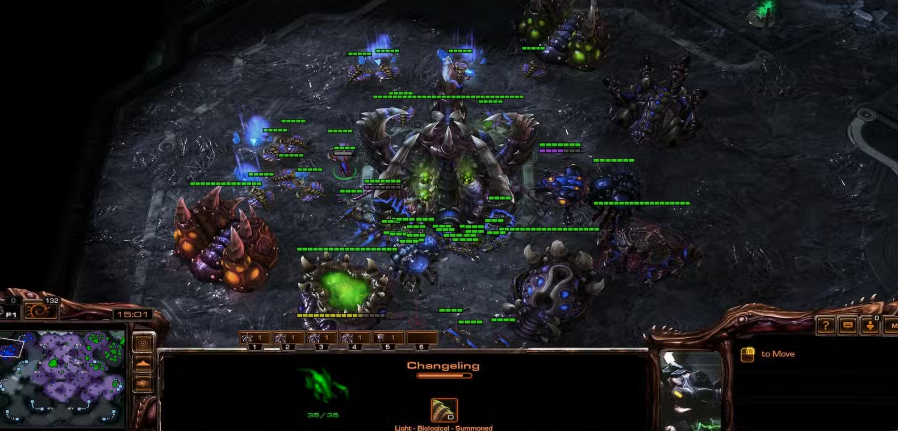
Adapt Overlords for Late-Game Intelligence
As the game advances, basic Overlords lose some effectiveness in the face of more heavily armed opponents. Morphing Overlords into Overseers enhances their scouting potential and adds valuable abilities that provide an edge in high-level play.
- Utilize Changeling Spies: The Changeling ability lets you deploy units that can slip into enemy lines undetected, giving valuable insight into their base and army composition.
- Detect Invisible Threats: Overseers can detect invisible or cloaked units, an ability that becomes critical against high-tech enemies who rely on stealth.
With Overseers providing advanced intelligence, you’ll gain a strategic overview of enemy positions and intentions, allowing you to plan attacks or defenses more effectively.
9. Spread Creep for Total Map Control
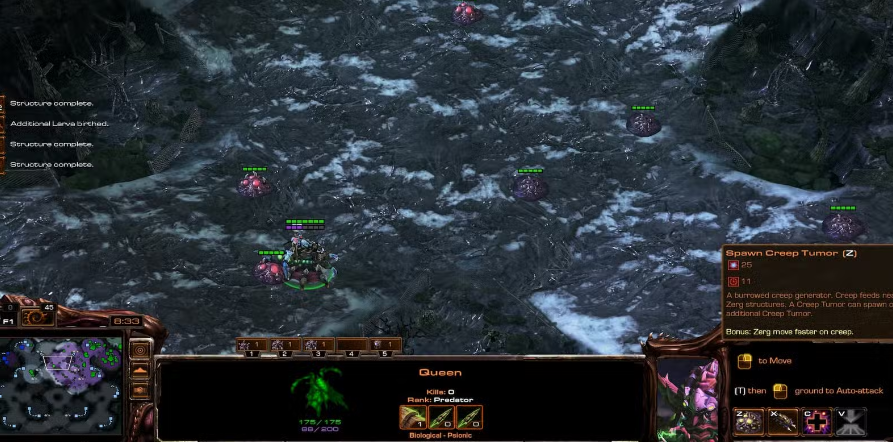
Creep Tumors Expand Your Influence and Enhance Mobility
The Zerg Creep has unique properties, granting vision, unit speed boosts, and the ability to prevent enemies from building. Strategic Creep spread is critical for maintaining control of the map.
- Use Queens to Spread Creep: Placing Creep Tumors with Queens and extending them throughout the map lets you control territory and block opponent expansion efforts.
- Build Spine and Spore Crawlers: These structures can be positioned on Creep to slow down or damage incoming forces, creating defensive zones across the map.
With extensive Creep coverage, you’ll gain unparalleled control over the battlefield, limiting enemy movements and bolstering your defenses while expanding your offensive options.
Frequently Asked Questions
Q: How many Hatcheries should I build as Zerg?
A: Aim to build at least three Hatcheries by the early-to-mid game. Each additional Hatchery increases your Larvae production and resource collection, which is essential for sustaining a large Zerg army.
Q: Why is spreading Creep important for Zerg?
A: Creep provides vision, increases Zerg unit speed, and prevents enemy structures from being built. Spreading it gives map control, improves mobility, and hampers enemy expansion.
Q: What’s the best way to scout as Zerg?
A: Use Overlords for early game scouting and place them on high ground for safety. In the mid-to-late game, morph some Overlords into Overseers to detect cloaked units and deploy Changelings for stealthy reconnaissance.
Mastering Zerg in StarCraft 2 involves understanding how to harness the unique strengths and strategies available to the Swarm. Focus on expanding your economy, maintaining map control with Creep, and maximizing unit production through efficient use of Queens and Hatcheries.
